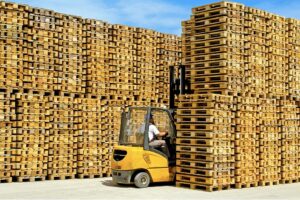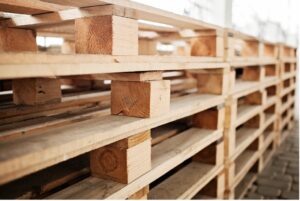
The production process of wooden pallets and packaging must comply with certain standards strictly related to environmental protection. Phytosanitary treatment plays a key role in this field. We dedicate an in-depth look at this process, trying to understand what it consists of, how it takes place and what regulations govern its application.
What is HT phytosanitary treatment of pallets
Packaging and pallets are today the basis for international trade in materials and products. However, the timber (often untreated) used to make them have over the years promoted the proliferation and spread of harmful organisms from one continent to another. The threats to the native vegetation of the countries where this trade occurrence were such that immediate action had to be taken. For this reason, the ISPM15 standard was introduced for the elimination of pests through phytosanitary treatment.
But how does ISPM15 treatment take place?
Originally, phytosanitary treatment could be carried out in two different ways:
- high temperature HT treatment;
- treatment by fumigation with methyl bromide.
The latter mode has been banned throughout Europe since 2010 due to its high environmental impact. High-temperature HT treatment, which consists of heating wood products to a temperature of not less than 56° for at least 30 straight minutes, remains in force. This procedure is completed by drying the finished products to remove the moisture generated during the previous heating process, but also to prevent the formation of mould.
A further advantage of the drying process is that it makes the wood stronger and more resistant. This is no small factor, especially if we consider that international shipments take a long time and it is essential that the pallets and packaging have good strength throughout the journey.
Compliance with ISPM15 FAO
The FAO International Plant Protection Convention introduced the ISPM15 standard to protect the world’s forests from the spread of harmful organisms through pallets and packaging. This regulation requires all member states to comply with certain rules in all cases where debarked wood thinner than 6 mm is used.
In detail, the materials for which adaptation to ISPM15 is required are:
- industrial packaging such as wooden pallets, cages and crates;
- wooden materials used for stowage, supports and plinths;
- commercial packaging for food, wine and fruit and vegetables.
It should also be noted that compliance with this standard is not mandatory for trade flows occurring within the European Union. The treatment is necessary and mandatory in all cases where pallets and the above-mentioned materials have to be shipped from one non-European country to another.

In order to comply with the regulations, one must also be aware that:
- it does not apply for all plywood products with a thickness of less than 6 mm;
- all products subjected to HT treatment must bear the appropriate stamp certifying their suitability with ISPM15;
- stamping can be done with fire or ink;
- wooden crates and cages that can be dismantled into several pieces must bear this mark on each individual piece, whereas for pallets only one stamp is sufficient;
- companies carrying out these treatments must be duly registered with the Fitok consortium;
- customers have the right to request certification with a graph and traceability number identifying the manufacturer and production batch.
Non-compliance entails the application of administrative and financial fines in the following cases:
- 2,500 to 15,000 euro for marketing products without regional phytosanitary authorisation;
- 1,500 to 9,000 euro for marketing products without Fitok authorisation;
- 2,500 to 15,000 increased by up to threefold for the most serious infringement resulting from the marketing of products without either a phytosanitary or a Fitok authorisation.
Peculiarities of the treatment of used pallets
Used pallets must be dealt with separately. With a view to environmental sustainability and optimisation of resources, pallets and other wooden materials can also be reused as long as they are intact and have not been altered in any other way. So the question arises as to whether the use of these products is permitted under ISPM15, and the answer is yes, provided certain conditions are met:
- if the company has kilns for treating and drying wood, it can resort to using used pallets and applying a new stamp, or proceed with a new phytosanitary treatment, remove the previous stamp and rebrand it;
- If, on the other hand, the company does not have a wood drying system, it may choose to use the used pallets without further treatment, but assumes responsibility for the suitability of the previous certification. Otherwise, it is possible to replace unsuitable pallet elements with others treated by an organisation registered with the Fitok consortium.
In order to avoid the risks and fines resulting from non-compliance, it is now more essential than ever to equip your company with dedicated systems for treating and drying wood. At Incomac, we have developed technologically advanced solutions to meet the production and product requirements of any sector. From condensation systems to conventional systems to high-temperature HT treatment: contact us for more information: we will help you find the most suitable system for your needs that gives you the assurance of working in compliance with ISPM15.
